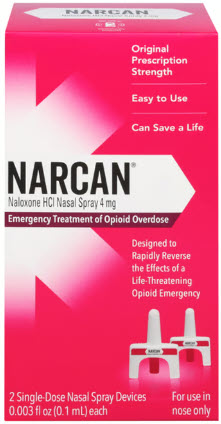When Andrew County Ambulance District responds to a location where Narcan is used or has the possibility to be used, our crews can “Leave Behind” a small pack with Narcan inside. There is also a face shield for providing rescue breaths as well as information of how to use the Narcan and helpful resources for those interested in receiving those resources.

Even if we haven’t responded to your location to “Leave Behind’ the Narcan, you can obtain Free Narcan by visiting the ambulance station in Savannah.
A Lifesaving Guide: How to Use Narcan for the Layperson
In the face of the ongoing opioid crisis, knowledge of how to use Narcan, a lifesaving naloxone medication, is more important than ever. Narcan can reverse the effects of opioid overdose, ultimately saving lives. As a layperson, it’s crucial to understand how to properly administer this medication. Here’s a step-by-step guide:
Step 1: Recognize the Signs of Overdose
It is essential to know the signs of opioid overdose, which may include:
- Unusual sleepiness or unresponsiveness
- Slow, shallow breathing or no breathing at all
- Pinpoint pupils
- Slow heartbeat or low blood pressure
- Cold, clammy skin
Step 2: Call 911
If you suspect someone is experiencing an overdose, call 911 immediately. Narcan is not a substitute for emergency medical care.
Step 3: Administer Narcan
Use Narcan when breathing is shallow, ineffective, or absent:
- Nasal Spray: Remove the Narcan nasal spray from its box. Tilt the person’s head back and provide support under the neck with your hand. Gently insert the nozzle into one nostril until your fingers touch the bottom of the person’s nose. Press the plunger firmly to release the dose into that nostril.
Step 4: Monitor the Person
After administering Narcan, keep the person under close watch. If the person does not respond within 2-3 minutes, administer a second dose. Continue to monitor their condition until emergency help arrives.
Step 5: Stay with the Person
Do not leave the person alone; their condition can deteriorate quickly. Be ready to administer additional doses of Narcan every 2-3 minutes until emergency medical personnel arrive.
While this guide serves as a basic introduction to using Narcan, it’s important to seek thorough training.
Remember, Narcan is a crucial tool in the fight against the opioid crisis, but it’s not a solution. It’s equally essential to support policies and programs that help people with addiction get the help they need.
Stay safe, and keep those around you safe, too.
Disclaimer: This information is intended to be a general guide. Always follow the manufacturer’s instructions included with Narcan. This is not medical advice. If you have specific questions, consult a healthcare professional.
